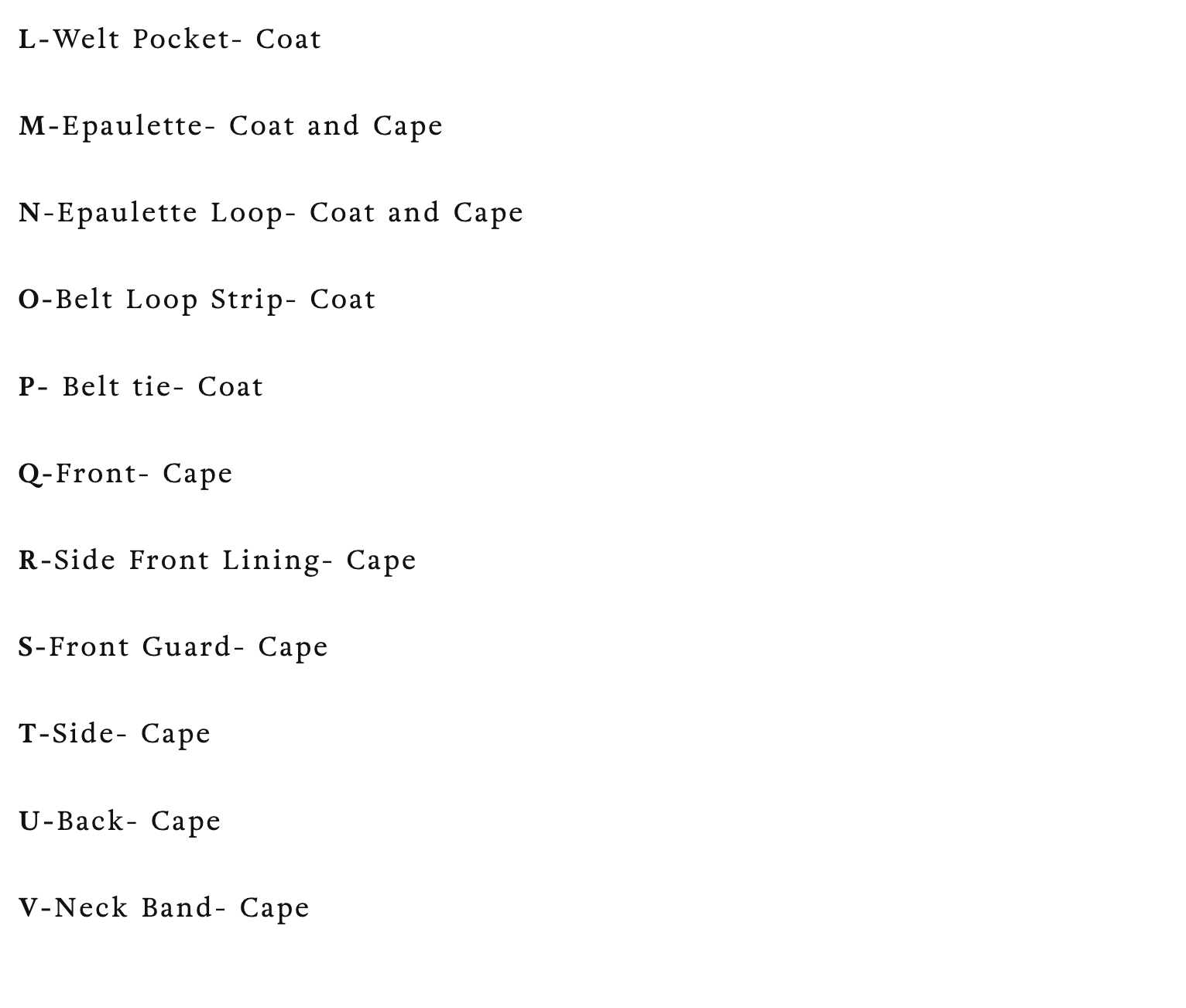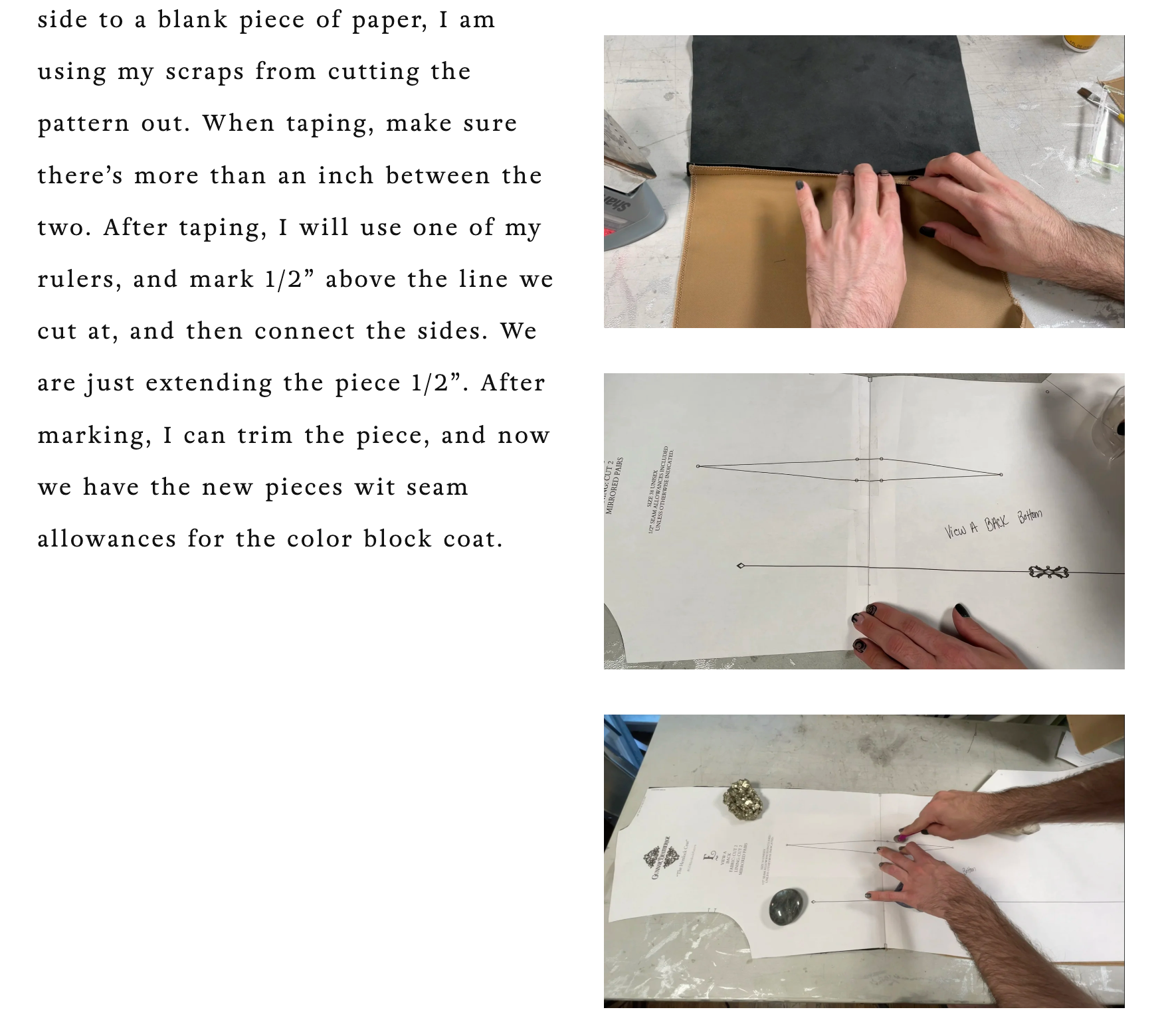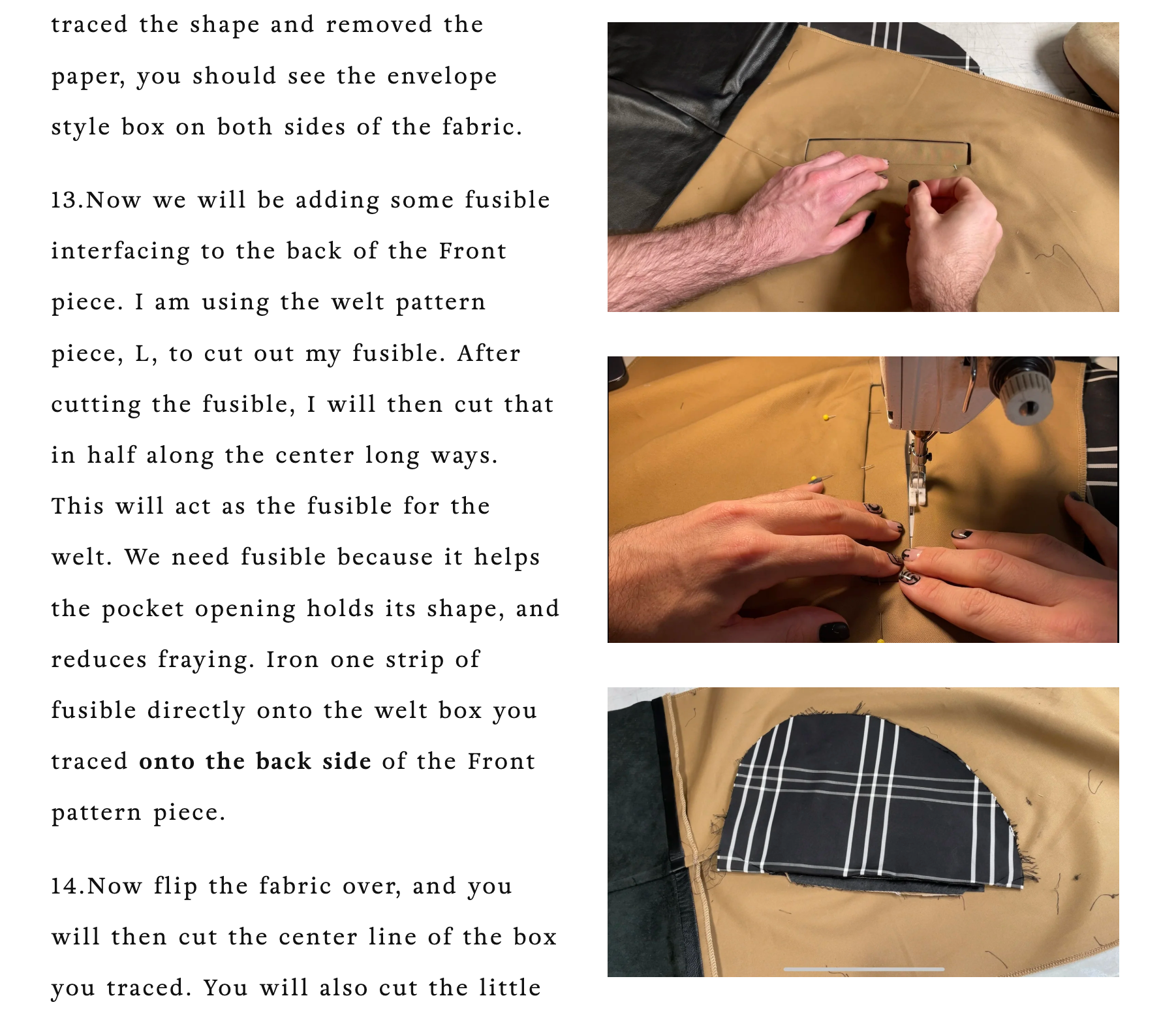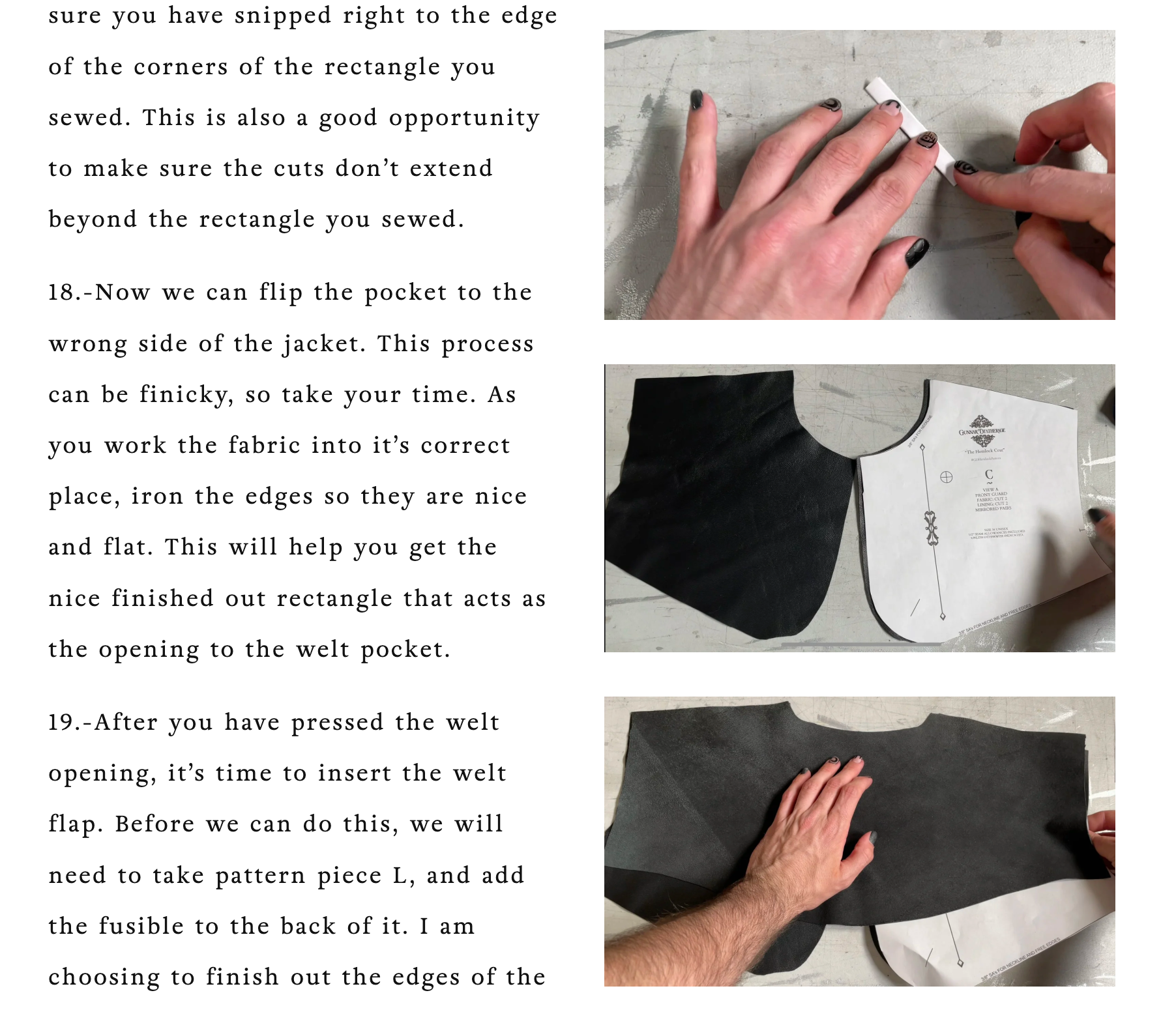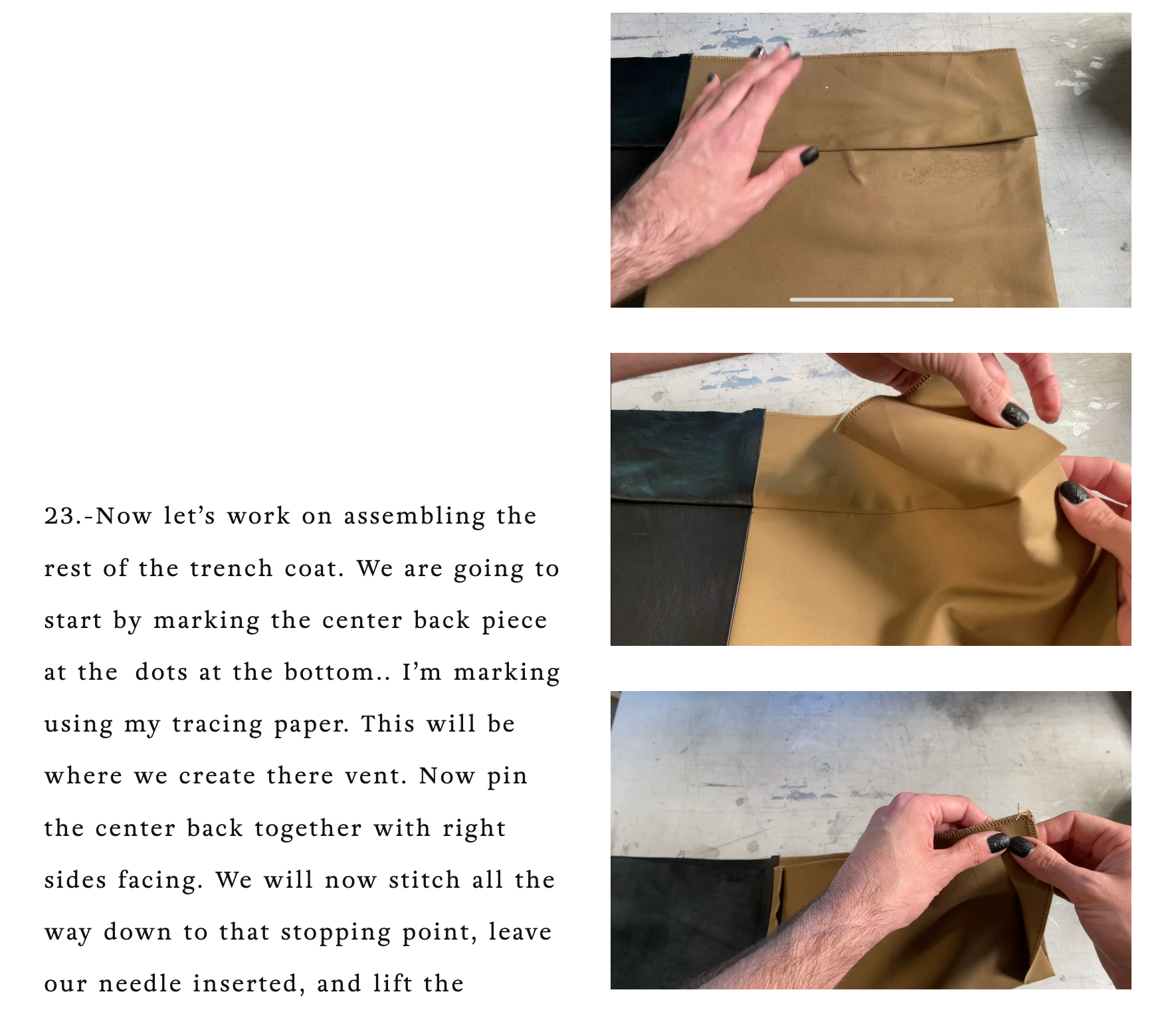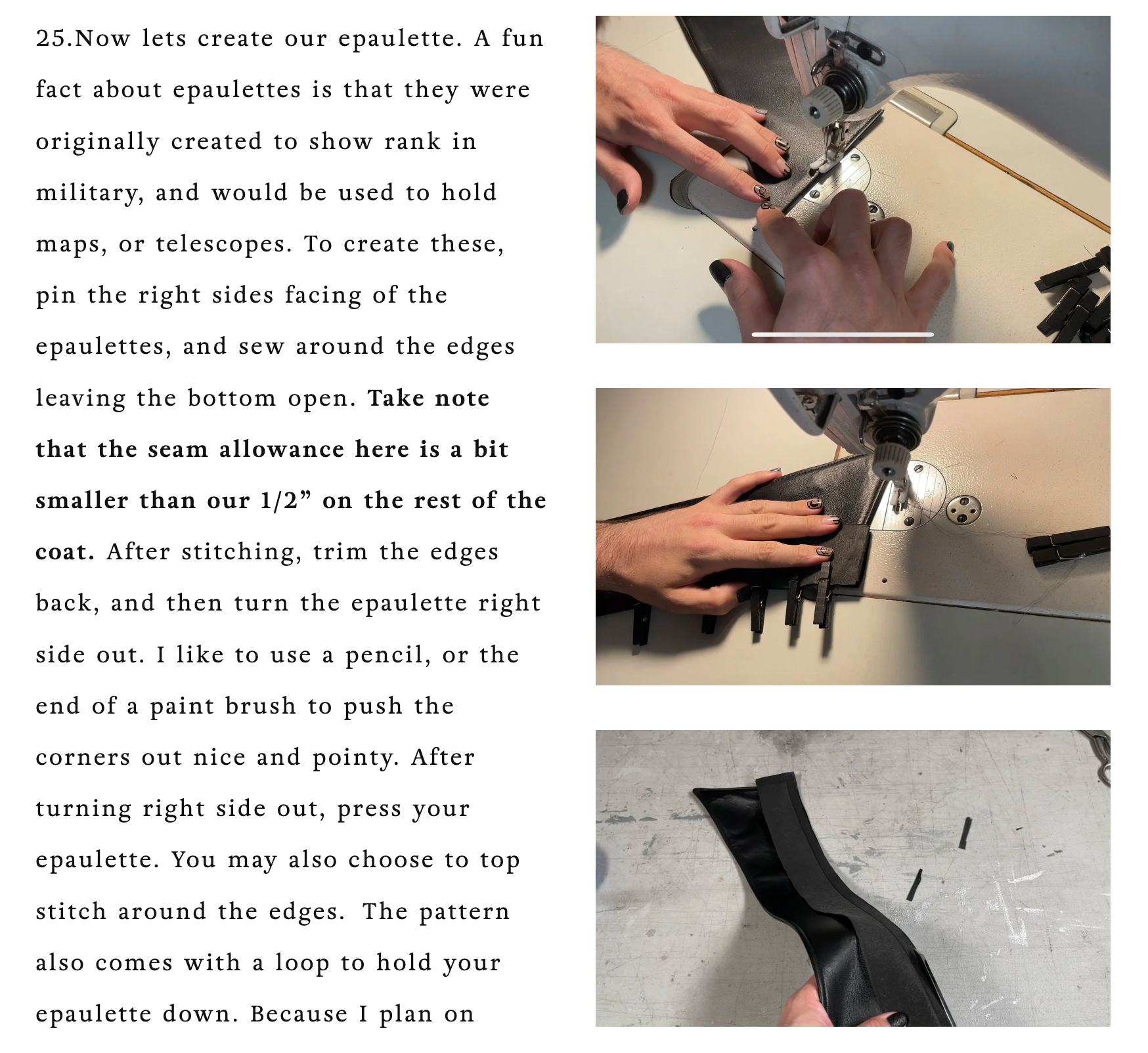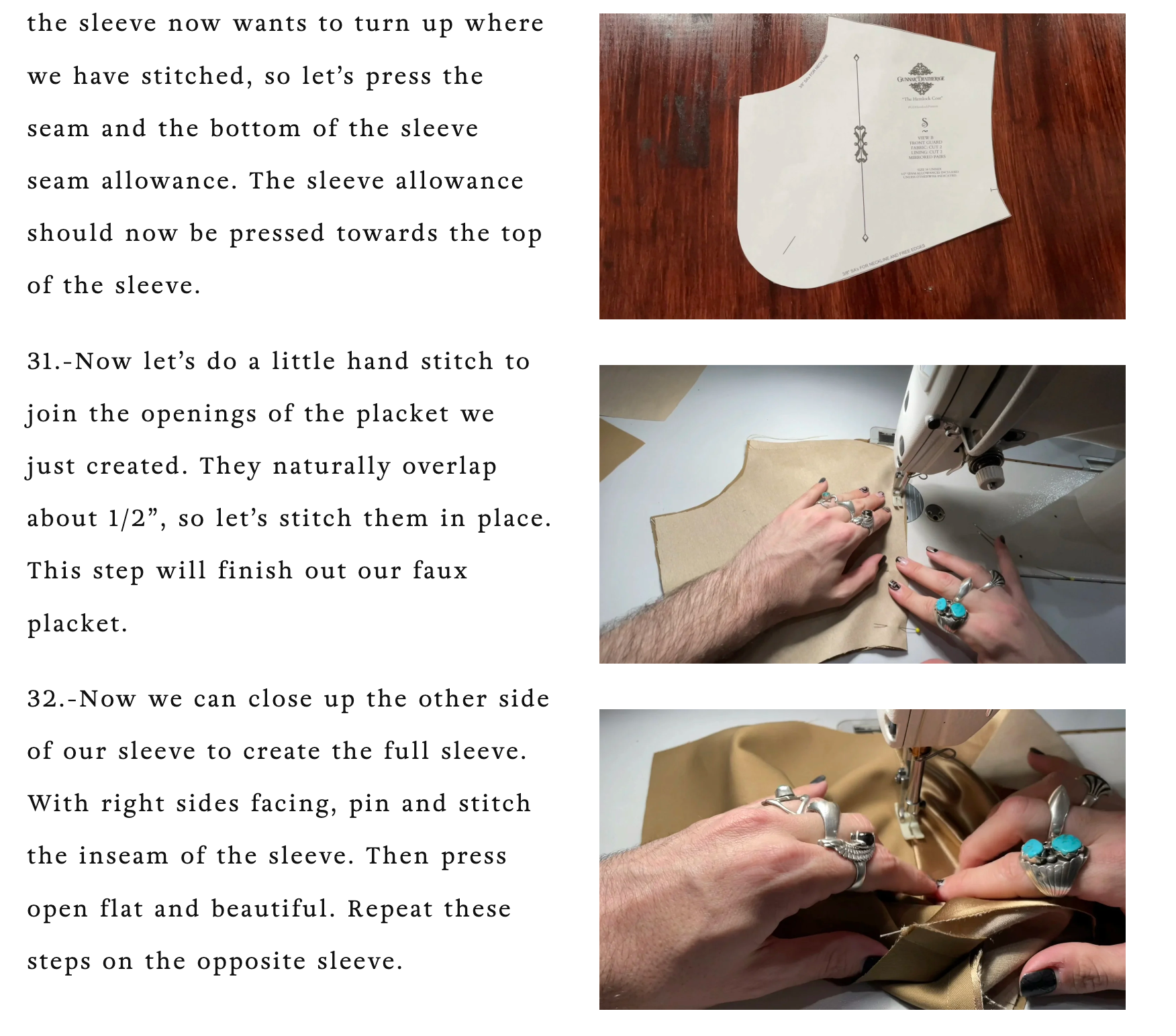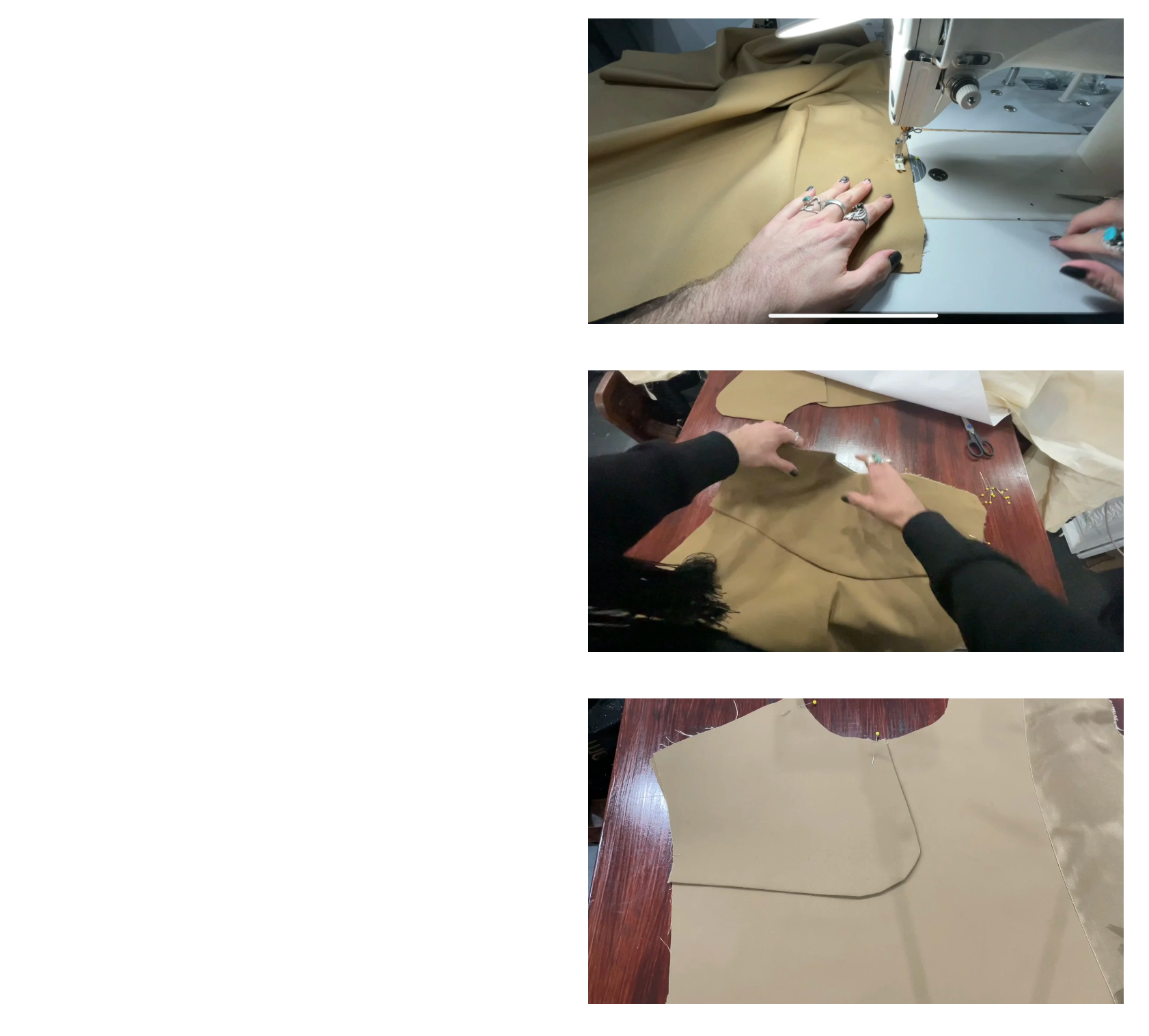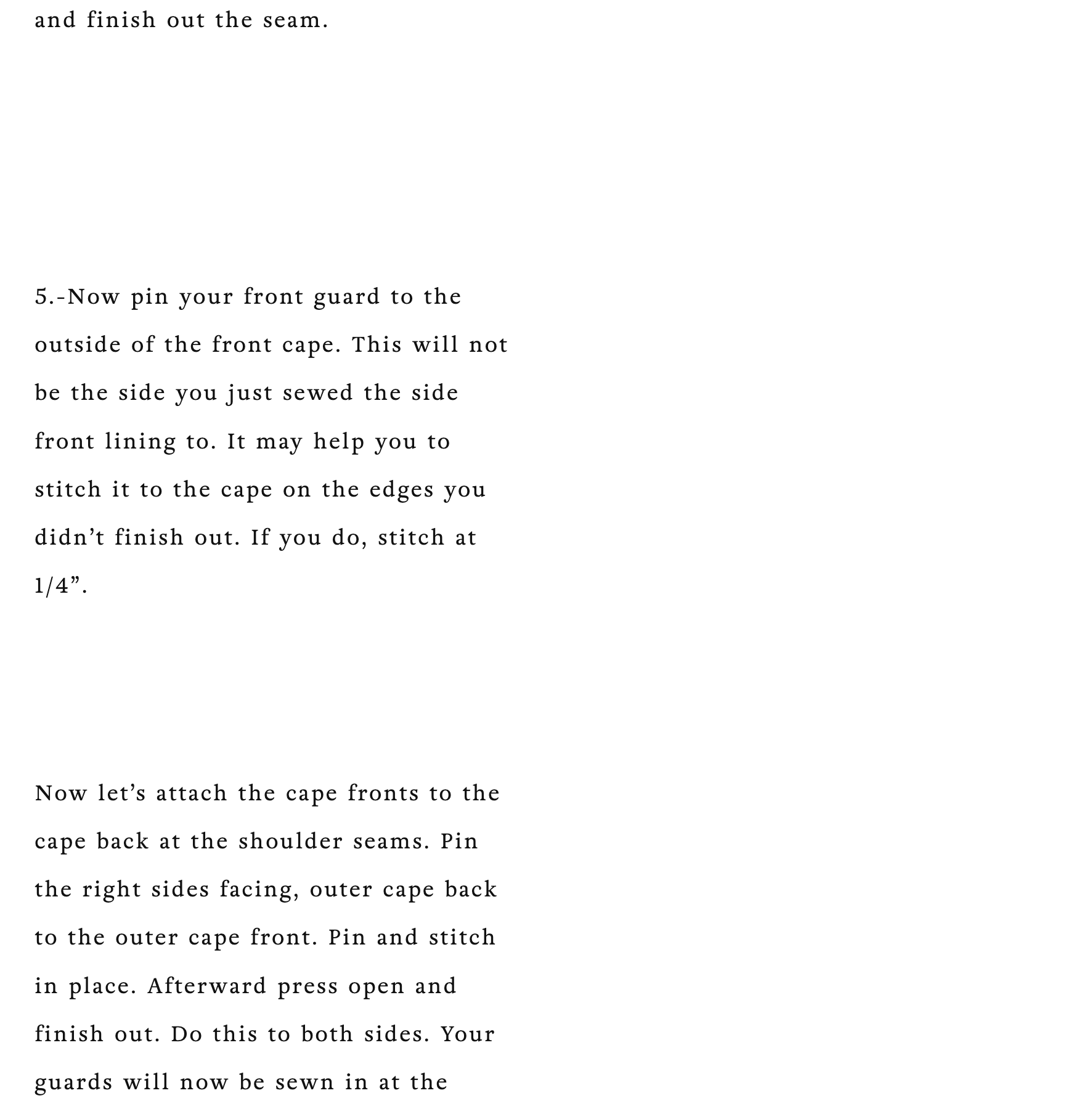The Hemlock Coat and Cape Sewing Pattern Guide

Hello, and Welcome to the Hemlock Coat and Cape pattern. This trench coat was inspired by times gone by, and is the perfect piece heading into the winter season!
This trench coat offers an optional color blocking option, optional rain shields, a nice pointed collar, a tie for the waist that is optional, epaulettes, and the perfect amount of mystery. The cape has high slits for easy arm movements, rain guards, and a collar band that fits just under the collar band of the trench coat so they can be worn together.
This pattern would be great to pair with suiting fabrics, gaberdine, cotton twills, wool wovens, or even a heavy satin like a duchess satin if you are feeling fancy. The fabric is where your personal style and design come into play!
Below are the written sewing instructions, and I also filmed a step by step Youtube video of the entire creation process of this dress which is on the left of this text box! When you make your dress, please tag me! I would love to see what your dress looks like!!

